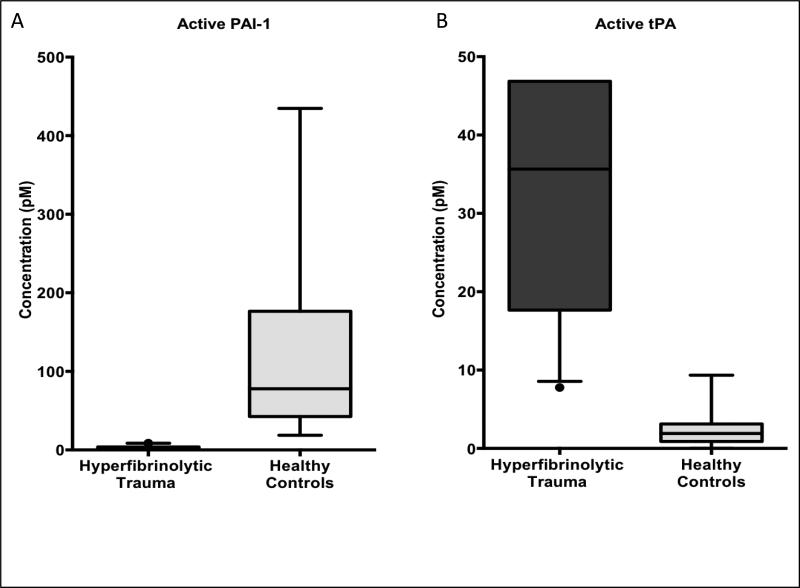Figure 4. Circulating levels of active PAI-1 are suppressed and active tPA levels elevated in hyperfibrinolytic (HF) trauma patients compared to healthy volunteer controls.
(A) Active (i.e. unbound to tPA) PAI-1 is suppressed to near zero in HF compared to healthy controls. (B) Conversely, active tPA (i.e. unbound to PAI-1) levels rise nearly 20-fold in HF compared to healthy volunteers. Taken together these findings demonstrate a sharp enzymatic switching behavior between the hyperfibrinolytic and the baseline physiologic state, which hinges on the relative abundance of the active forms of the mutually inhibitor species tPA and PAI-1.

